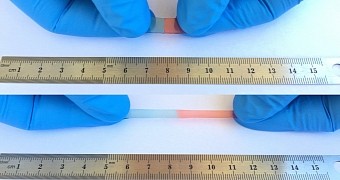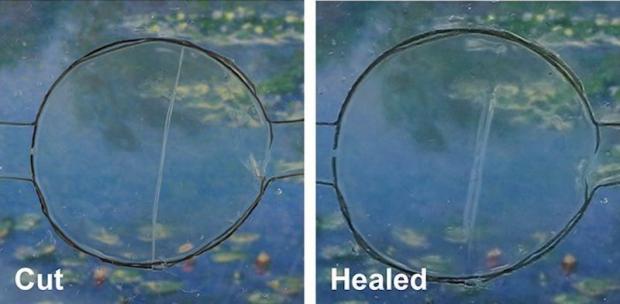Scientists from the University of California, Riverside, have created a new material that has the ability to self-heal beyond just cuts and scratches, according to Business Insider. The material can conduct electricity and it might be featured on smartphones in 2020.
Researchers created the material out of “stretchable polymer and an ionic salt,” while particular ions and molecules attract each other and create the self-healing ability.
The team of scientists found that the material can stretch to 50 times its original size and features a special type of bond called an ion-dipole interaction, the force between charged ions and polar molecules. This gives the material the ability to regenerate itself and repair breaks or scratches.
In fact, several tests were conducted on the material and scientists found that cuts and scratches were quickly repaired. In less than 24 hours after the material was torn in half, molecules attracted each other and managed to automatically stitch together.
The material could be used on smartphones
This means that if you break or scratch your screen, you no longer need to get the display replaced, you could just leave the phone be for a few hours. Researchers say that because the material can conduct electricity, it’s suitable for smartphones and even batteries.
Self-healing materials in smartphones isn’t a new idea; LG’s G Flex also featured a material that could repair itself in case of shallow scratches, but it was limited to the back panel. Researchers say that the material has the capacity to increase the device's performance, while the first phones to feature the new technology could arrive in 2020.
Currently, smartphone makers equip their devices with Corning Gorilla Glass or Sapphire Glass coating to make them more durable. Motorola has been equipping its phones with multi-layered shatterproof screens since 2015, but a self-healing display would certainly make users more comfortable with their smartphones. Companies must now decide whether the self-healing display would be a feasible solution in terms of production costs.

 14 DAY TRIAL //
14 DAY TRIAL // 

